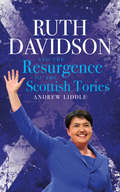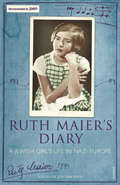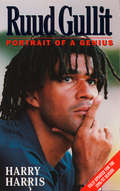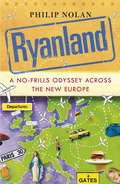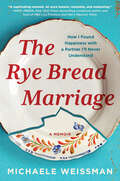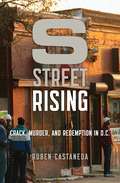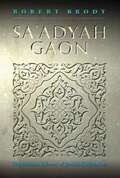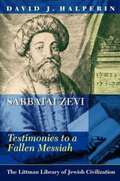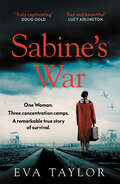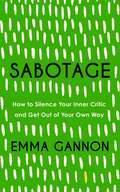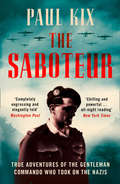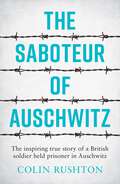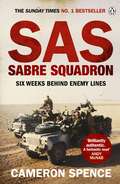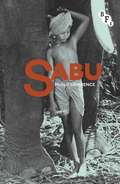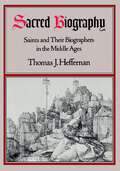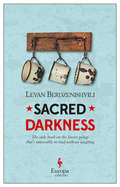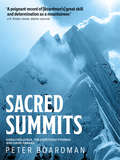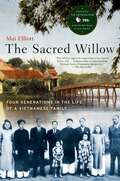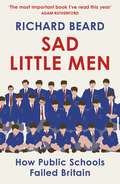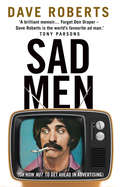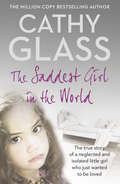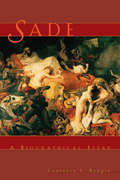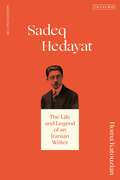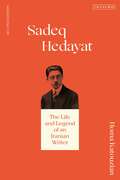- Table View
- List View
Ruth Davidson
by Andrew LiddleRuth Davidson has enjoyed a stratospheric rise to prominence within the Scottish Conservative Party, winning her surprise leadership victory an astonishing six months after becoming an MSP. Under her redoubtable leadership, the Tory Party have revitalised their fortunes north of the border, more than doubling their seats and overtaking Labour for the first time in sixty years. A lesbian, kick-boxing former Territorial Army reservist, Davidson has broken the mould of both Tory and Scottish politics and has been touted as a future Prime Minister. Yet little is known of Ms Davidson and her remarkable journey outside of Scotland. With Scottish politics in flux following the hard-fought independence referendum and Britain’s imminent departure from the EU, Davidson’s profile will only become more prominent as she heads up the official opposition. This first biography of one of Britain’s rising political stars examines how Davidson rejuvenated the toxic Tory brand and asks what the future holds both in Scotland and beyond for this extraordinary young politician.
Ruth Maier's Diary: A Jewish girl's life in Nazi Europe
by Ruth MaierRuth Maier was born into a middle-class Jewish family in interwar Vienna. Following the Anschluss of Austria in March 1938, her world collapsed. In early 1939, her sister having left for England, Ruth emigrated to Norway and lived with a family in Lillestrøm, near Oslo. Although she loved many things about her new country and its people, Ruth became increasingly isolated until she met a soulmate, Gunvor Hofmo, who was to become a celebrated poet. When Norway became a Nazi conquest in April 1940, Ruth's effort to join the rest of her family in Britain became ever more urgent.Ruth Maier kept a diary from 1934 until she was deported to Auschwitz in 1942 at the age of twenty-two. Although she was only in her teens, she shows a sophisticated understanding of the political forces shaping Europe. Ruth is lyrical, witty and incisive and explores universal themes of isolation, identity, love, friendship, desire and justice. Most of all, she seeks what it means to be a human being.
Ruud Gullit (Text Only): Portrait Of A Genius (text Only)
by Harry HarrisFirst published in 1997 and now available as an ebook. Two years after arriving in London, Ruud Gullit took English football by storm, not only revolutionising Chelsea Football Club but helping to transform the image of the Premier League so that it now attracts the best footballers from all over the world.
Ryanland: A no-frills odyssey across the new Europe
by Philip NolanIn this hilarious, no-holds-barred account, journalist Philip Nolan packs his bag (maximum 10kg, please) and takes us on an adventure that is not for the faint-hearted as he flies with Europe 's biggest low-cost airline. Using Ryanair destinations as a route planner, we grab our boarding passes and fight for the first available seat as we travel with him to towns we've never heard of ( Tampere and Wroclaw , anyone?) and to cities we've always wanted to visit. From watching the pilgrims completing the Camino in Santiago de Compostela to cheering with the fans in Frankfurt during the World Cup, from having his alpha waves channelled at a spa in Austria to a little soul cleansing at the baths at Lourdes, from the all-night party that is Riga to the eerie hush of Beauvais on a slow Monday night, we are treated to a kaleidoscopic snapshot of the quirks and foibles of a continent. Ryanair has opened up Europe 's treasures, and a few complete dumps too, in a way never before possible. From Biarritz to Blackpool to Bratislava , Pau to Pisa to Porto, Vienna to Valencia to Venice , Philip Nolan completes a whirlwind tour of the continent he calls Ryanland. The journey is whimsical, wistful and laugh-out-loud funny, as we travel on a spellbinding no-frills odyssey.
The Rye Bread Marriage: How I Found Happiness with a Partner I'll Never Understand
by Michaele WeissmanHow do partners in long-lasting relationships live together without driving each other up a wall? After forty years of marriage, Michaele Weissman has a few answers. When they first meet, John— a dashing European, a Latvian refugee, a physics PhD—is hoping to settle down. Michaele, a fast-talking American college student, is hungry for an independent life as a writer and historian. &“I am too young, and you are too Latvian,&” the twenty-year-old Michaele tells the twenty-eight-year-old John, explaining why she is ending their four-month romance. Fifteen years later, the two are married. Their love for each other does not assuage the trauma John experienced as a child during World War II; nor does it help Michaele understand her husband&’s unwavering devotion to every aspect of Latvian culture, particularly his passion for the dark, intense rye bread of his birthplace (nothing like the rye she knew growing up in her secular Jewish household). Michaele feels like an outsider in her own relationship, unable to touch a core piece of her husband&’s being. So, as John realizes his dream of opening a rye bread bakery, Michaele embarks on a fascinating journey. Delving into history and traveling across Europe with John, she excavates poignant stories of war, privation, and resilience—and realizes at last that rye bread represents everything about John&’s homeland that he loved and lost. Eventually Michaele even comes to love rye bread, too. How do the stories we live and the stories we inherit play out in our relationships? How do individuals learn to tolerate ethnic, religious, and national differences? The Rye Bread Marriage is a beautifully told, often humorous, love story about the messiness of spending a lifetime with another human being. Michaele Weissman reminds us that every relationship is a mystery—and a miracle.
S Street Rising: Crack, Murder, and Redemption in D.C.
by Ruben CastanedaDuring the height of the crack epidemic that decimated the streets of D.C., Ruben Castaneda covered the crime beat for the Washington Post. The first in his family to graduate from college, he had landed a job at one of the country's premier newspapers. But his apparent success masked a devastating secret: he was a crack addict. Even as he covered the drug-fueled violence that was destroying the city, he was prowling S Street, a 24/7 open-air crack market, during his off hours, looking for his next fix. Castaneda's remarkable book, S Street Rising, is more than a memoir; it's a portrait of a city in crisis. It's the adrenalin-infused story of the street where Castaneda quickly became a regular, and where a fledgling church led by a charismatic and streetwise pastorwas protected by the local drug kingpin, a dangerous man who followed an old-school code of honor. It's the story of Castaneda's friendship with an exceptional police homicide commander whose career was derailed when he ran afoul of Mayor Marion Barry and his political cronies. And it's a study of the city itself as it tried to rise above the bloody crack epidemic and the corrosive politics of the Barry era. S Street Rising is The Wire meets the Oscar-winning movie Crash. And it's all true.
Sa'adyah Gaon (The Littman Library of Jewish Civilization)
by Robert BrodySa’adyah Gaon was an outstanding tenth-century Jewish thinker—a prominent rabbi, philosopher, and exegete. He was a pioneer in the fields in which he toiled, and was an inspiration and basis for later Jewish writing in all these areas. The last major English-language study of his work was published in 1921, long before Genizah research changed the understanding of the time in which he lived. Robert Brody’s masterly work, covering Sa’adyah’s biography and his main areas of creativity in an accessible way, is therefore a much-needed reassessment of an outstanding figure. The opening chapter, on the geonic period that formed the background to Sa’adyah’s life (a period on which there are few works in English), is followed by an overview that brings out the revolutionary aspects of his work and the characteristic features of his writings. Subsequent chapters consider his philosophical works; his Bible commentaries; his pioneering linguistic work; his poetry; his halakhic activity (including an examination of his use of the Palestinian Talmud compared to that of the Babylonian Talmud); and his activity as a polemicist, notably against the Karaites. An Epilogue sums up his importance in medieval Jewish culture. Particularly valuable features of the book are the copious quotations from Sa’adyah’s works, which facilitate familiarity with his style as well as his ideas; the clarity in presenting complex and difficult concepts; the constant assessment of his relationship to his predecessors in his various fields of study and his own unique contributions to each field; and the contextualization of his contribution within the political, cultural, and religious climate of his times so that both revolutionary and conservative elements in his thought can be identified and evaluated.
Sabbatai Zevi: Testimonies to a Fallen Messiah (The Littman Library of Jewish Civilization)
by David HalperinSabbatai Zevi (1626–76) stirred up the Jewish world of the mid-seventeenth century by claiming to be the messiah, then stunned it by suddenly converting to Islam. His story, and that of the movement he created, is a landmark event in early modern Jewish history and a dramatic example of what can happen when mystic dreams and messianic hopes combine in an explosive mixture. Now, for the first time, English readers can experience these events through the words of those who lived through them, in lucid and compelling translations by a leading authority in the field. Of the contemporary ‘testimonies’ translated by David J. Halperin, three are accounts by Sabbatai Zevi’s followers of the life and deeds of their messiah. These are the Najara Chronicle, an eyewitness narrative which Gershom Scholem called ‘one of the most extraordinary documents shedding light on Sabbatai’s personality’; Baruch of Arezzo’s Memorial to the Children of Israel, a sober yet devout biography of Sabbatai written shortly after his death; and the bizarrely fanciful hagiography composed in 1692 by Abraham Cuenque of Hebron. These narratives by Sabbatean ‘believers’ are supplemented by two seventeenth-century letters, pungent in their style and colourful in their details, in which Sabbatai and his followers are described by a contemporary rabbi who detested them and everything they stood for. Finally, a reminiscence of Sabbatai’s last days, preserved by one of the most independent-minded of his followers, conveys the enigma of the man who was to haunt the generations.
Sabine’s War: The Incredible True Story Of A Resistance Fighter Who Survived Three Concentration Camps
by Eva TaylorAn astonishing tale of romance, resistance and bravery
Sabotage: How to Silence Your Inner Critic and Get Out of Your Own Way
by Emma GannonWe all have a relationship with self-sabotage, a tendency to put barriers in the way of our progression and our happiness - at home and at work, both on and offline. Sabotage is a book about challenging these behaviours, digging a little deeper into why that unhelpful voice can creep up on us. Procrastination, jealousy, inner critic: how can we overcome these obstacles? How do we stop getting in our own way?Exploring real-life stories of success and setbacks from leading cultural voices, Emma Gannon searches for experiences, solutions and ways to look differently at what's really holding us back. This is the handbook you need to slay your own sabotage.
The Saboteur: The Aristocrat Who Became France's Most Daring Anti-nazi Commando
by Paul KixIn the tradition of ‘Agent Zigzag’ comes a breathtaking biography of WWII’s ‘Scarlet Pimpernel’ as fast-paced and emotionally intuitive as the best spy thrillers. This celebrates unsung hero Robert de La Rochefoucauld, an aristocrat turned anti-Nazi saboteur, and his exploits as a British Special Operations Executive-trained resistant
The Saboteur of Auschwitz: The Inspiring True Story of a British Soldier Held Prisoner in Auschwitz
by Colin RushtonFor fans of The Tattooist of Auschwitz, The Librarian of Auschwitz and The Choice, this is the incredible true story of a British soldier POW.In 1942, young British soldier Arthur Dodd was taken prisoner by the German Army and transported to Oswiecim in Polish Upper Silesia. The Germans gave it another name, now synonymous with mankind’s darkest hours. They called it Auschwitz.Forced to do hard labour, starved and savagely beaten, Arthur thought his life would end in Auschwitz. Determined to go down fighting, he sabotaged Nazi industrial work, risked his life to alleviate the suffering of the Jewish prisoners and aided a partisan group planning a mass break-out.This shocking true story sheds new light on the operations at the camp, exposes a hierarchy of prisoner treatment by the SS and presents the largely unknown story of the military POWs held there.
Sabre Squadron
by Cameron Spence* AVAILABLE FOR PRE-ORDER NOW *With the outbreak of Gulf War hostilities a unit from 22 SAS slipped quietly over the border and into the enemy's backyard. It would be six weeks before any of the patrol again reached safety.Sabre Squadron recounts in graphic detail their scud-busting operations deep inside Iraq. They were operating alone and out of reach of reinforcements, with the threat of detection and its fatal consequences ever present. Yet their determination to wreak havoc behind enemy lines remained undimmed, culminating in an attack that decisively reconfirmed the regiment's awesome reputation.Cameron Spence, a senior NCO on the operation, takes you as close to the fighting SAS as you are ever likely to get, conveying the relentless tension, black humour and camaraderie punctuated by explosive, nerve-shredding action that characterized the mission.This is the true story of an SAS operation of breathtaking audacity and flair, carried out under unimaginable pressure, in the face of impossible odds.'A brilliantly authentic account of war with an SAS patrol, it's a fantastic read' - ANDY MCNAB, bestselling author of Bravo Two Zero'Tense and at times terrifying... a well told action story' - SUNDAY TELEGRAPH'A terrific read' - THE TIMES'Blood, guts and military macho - as authentic as anything you are likely to read' - MAIL ON SUNDAY
Sabu
by Michael LawrenceThe first Indian to become an international film star, Sabu rose to fame as a child actor in Elephant Boy (1937), and subsequently appeared in a succession of British pictures before relocating to Hollywood, where he died in 1963. Repeatedly cast in orientalist extravaganzas and jungle thrillers, he was associated with the 'exotic' and the 'primitive' in ways that reflected contemporary attitudes towards India and 'the East' more generally. In this captivating study, Michael Lawrence explores the historical, political, cultural contexts of Sabu's popularity as a star, and considers the technological and industrial shifts that shaped his career – from the emergence of Technicolor in the late 1930s to the breakdown of the studio system in the 1950s. Attending to the detail of Sabu's distinctively physical performances, Lawrence shows how his agency as an actor enabled him to endure, exceed and exploit his unique star image.
Sacred Biography: Saints and Their Biographers in the Middle Ages
by Thomas J. HeffernanThough medieval "saints' lives" are among the oldest literary texts of Western vernacular culture, they are routinely patronized as "pious fiction" by modern historiography. This book demonstrates that to characterize the genre as fiction is to misunderstand the intentions of medieval authors, who were neither credulous fools nor men blinded by piety. Concentrating on English texts, Heffernan reconstructs the medieval perspective and considers sacred biography in relation to the community for which it was written; identifies the genre's rhetorical practices and purposes; and demonstrates the syncretistic way in which the life of the medieval saint was transformed from oral tales to sacred text. In the process, Heffernan not only achieves a more contextually accurate understanding of the medieval saints' lives, but details a new critical method that has important implications for the practice of textual criticism.
Sacred Darkness: The Last Days of the Gulag
by Levan BerdzenishviliBased on true events, a thrilling marriage of reportage and lived experience, Sacred Darkness tears apart the fabric of Russian Soviet repression with biting humor and wry insight. Here are the stories of citizens who find themselves in extraordinary and remarkable conditions. Iona, the philosopher and bon vivant; Merab, whose discourses resemble those of Socrates; Irakli, the learned classicist; Anderson, the librarian; the gourmands, Maximovich and Petrov; Kukharuk, the barber. These people and many more form the unofficial aristocracy, the intelligentsia, of the gulag, and with them, serving a sentence for political agitation, Levan Berdzenishvili, to his surprise, spends some of the most enjoyable and enlightening days of his life. Levan Berdzenishvili bears witness to these remarkable lives. Each chapter carries a single person’s name and his story. Collectively, these portraits create a multifaceted and vast picture of life in the Soviet Union and during its demise. A nation seeks to suppress its brightest citizens, to keep them locked away in the dark. But in that darkness, unbeknown to the jailor, bonds stronger than walls are forming.
Sacred Summits: The Carstensz Pyramid, Kangchenjunga and Gauri Sankar
by Peter BoardmanMountaintops have long been seen as sacred places, home to gods and dreams. In one climbing year Peter Boardman visited three very different sacred mountains. He began on the South Face of the Carstensz Pyramid in New Guinea. This is the highest point between the Andes and the Himalaya, and one of the most inaccessible, rising above thick jungle inhabited by warring Stone Age tribes.During the spring Boardman made a four-man, oxygen-free attempt on the world's third highest peak, Kangchenjunga. Hurricane-force winds beat back their first two bids on the unclimbed North Ridge, but they eventually stood within feet of the summit – leaving the final few yards untrodden in deference to the inhabiting deity. In October, he climbed the mountain most sacred to the Sherpas: the twin-summited Gauri Sankar. Renowned for its technical difficulty and spectacular profile, it is aptly dubbed the Eiger of the Himalaya and Boardman's first ascent took a gruelling twenty-three days.Three sacred mountains, three very different expeditions, all superbly captured by Boardman in Sacred Summits, his second book, first published shortly after his death in 1982. Combining the excitement of extreme climbing with acute observation of life in the mountains, this is an amusing, dramatic, poignant and thought-provoking book.Peter Boardman and Joe Tasker died on Everest in 1982, whilst attempting a new and unclimbed line. Both men were superb mountaineers and talented writers. Their literary legacy lives on through the Boardman Tasker Prize for Mountain Literature, established by family and friends in 1983 and presented annually to the author or co-authors of an original work which has made an outstanding contribution to mountain literature.
The Sacred Willow: Four Generations in the Life of a Vietnamese Family
by Mai ElliottA finalist for the Pulitzer Prize, Duong Van Mai Elliott's The Sacred Willow illuminates recent Vietnamese history by weaving together the stories of the lives of four generations of her family. Beginning with her great-grandfather, who rose from rural poverty to become an influential landowner, and continuing to the present, Mai Elliott traces her family's journey through an era of tumultuous change. She tells us of childhood hours in her grandmother's silk shop, and of hiding while French troops torched her village, watching while blossoms torn by fire from the trees flutter "like hundreds of butterflies" overhead. She makes clear the agonizing choices that split Vietnamese families: her eldest sister left her staunchly anti-communist home to join the Viet Minh, and spent months sleeping in jungle camps with her infant son, fearing air raids by day and tigers by night. And she follows several family members through the last, desperate hours of the fall of Saigon-including one nephew who tried to escape by grabbing the skid of a departing American helicopter. Based on family papers, dozens of interviews, and a wealth of other research, this is not only a memorable family saga but a record of how the Vietnamese themselves have experienced their times.
The Sacred Willow: Four Generations in the Life of a Vietnamese Family
by Mai ElliottA finalist for the Pulitzer Prize, Duong Van Mai Elliott's The Sacred Willow illuminates recent Vietnamese history by weaving together the stories of the lives of four generations of her family. Beginning with her great-grandfather, who rose from rural poverty to become an influential landowner, and continuing to the present, Mai Elliott traces her family's journey through an era of tumultuous change. She tells us of childhood hours in her grandmother's silk shop, and of hiding while French troops torched her village, watching while blossoms torn by fire from the trees flutter "like hundreds of butterflies" overhead. She makes clear the agonizing choices that split Vietnamese families: her eldest sister left her staunchly anti-communist home to join the Viet Minh, and spent months sleeping in jungle camps with her infant son, fearing air raids by day and tigers by night. And she follows several family members through the last, desperate hours of the fall of Saigon-including one nephew who tried to escape by grabbing the skid of a departing American helicopter. Based on family papers, dozens of interviews, and a wealth of other research, this is not only a memorable family saga but a record of how the Vietnamese themselves have experienced their times.
Sad Little Men: Private Schools and the Ruin of England
by Richard Beard'The most important book I've read this year...the writing is magnetic' Adam RutherfordIn 1975, as a child, Richard Beard was sent away from his home to sleep in a dormitory. So were David Cameron and Boris Johnson.In those days a private boys' boarding school education was largely the same experience as it had been for generations: a training for the challenges of Empire. He didn't enjoy it. But the first and most important lesson was to not let that show.Being separated from the people who love you is traumatic. How did that feel at the time, and what sort of adult does it mould? This is a story about England, and a portrait of a type of boy, trained to lead, who becomes a certain type of man. As clearly as an X-ray, it reveals the make-up of those who seek power - what makes them tick, and why.Sad Little Men addresses debates about privilege head-on; clearly and unforgettably, it shows the problem with putting a succession of men from boarding schools into positions of influence, including 10 Downing Street. Is this who we want in charge, especially at a time of crisis?It is a passionate, tender reckoning - with one individual's past, but also with a national bad habit.'Insanely readable and enjoyable' - TOM HOLLAND, author of Dominion
Sad Men
by Dave RobertsAll Dave Roberts ever wanted to do (apart from collect football programmes) was to work in advertising. More specifically, to work for the world's best advertising agency, Saatchi and Saatchi. There was just one problem. Even when he managed to persuade someone to employ him, Dave's copywriting assignments were mainly for second hand car dealers and double glazing companies. And Leeds, Manchester and, bizarrely, New Zealand were a long way from Charlotte Street and Madison Avenue. This was the world of the Sad Men.In his sparkling new memoir, Dave tells the story of a life shaped by his love of adverts, from seeing the PG Tips chimps at the age of three to writing infamous ads such as the Westpac Rap and having David Jason plug a family restaurant. Bursting with brilliant ideas - and some pretty daft ones - it is the cautionary tale of a quest for advertising glory... and not quite ever getting there.
The Saddest Girl in the World
by Cathy GlassThe Sunday Times and New York Times bestselling author of Damaged tells the true story of Donna, who came into foster care aged ten, having been abused, victimised and rejected by her family.
Sade: A Biographical Essay
by Laurence L. BongieThe writings of the Marquis de Sade have recently attained notoriety in the canon of world literature. Now Sade himself is often celebrated as a heroic apostle of individual rights and a giant of philosophical thought. In this detailed investigative work, Laurence Bongie tests these claims and finds them unfounded and undeserved. "A valuable correction to the perception of Sade as a profound thinker, a great writer, and a martyr to liberty. Drawing on original archival work, Bongie tries to illuminate Sade's childhood and his relationship with his parents. . . . Fluent and well-informed."—Library Journal "Mr. Bongie . . . has written an investigation focusing on one aspect of Sade's character and development, his heretofore neglected relationship with his aristocratic mother. . . . A profitable selection."—Richard Bernstein, New York Times "A welcome corrective. Bongie's book . . . aims to deflate the exalted claims made about the marquis by demonstrating that he was a monstrous character."—Scott Stossel, Boston Phoenix Literary Supplement
Sadeq Hedayat: The Life and Legend of an Iranian Writer (Iranian Studies)
by Homa KatouzianSadeq Hedayat is the most famous and the most enigmatic Iranian writer of the 20th century. This book is the first comprehensive study of Hedayat's life and works set against the background of literary and political developments in a rapidly changing Iran over the first half of the 20th century. Katouzian discusses Hedayat's life and times and the literary and political circles with which he was associated. But he also emphasises the uniqueness and universality of his ideas that have both influenced and set Hedayat apart from other Iranian writers of the period and that have given him a mystique that has been instrumental in his posthumous success with acclaimed works such as The Blind Owl.This second edition is fully revised and updated to reflect on recent debates and scholarship on Sadeq Hadeyat.
Sadeq Hedayat: The Life and Legend of an Iranian Writer (Iranian Studies)
by Homa KatouzianSadeq Hedayat is the most famous and the most enigmatic Iranian writer of the 20th century. This book is the first comprehensive study of Hedayat's life and works set against the background of literary and political developments in a rapidly changing Iran over the first half of the 20th century. Katouzian discusses Hedayat's life and times and the literary and political circles with which he was associated. But he also emphasises the uniqueness and universality of his ideas that have both influenced and set Hedayat apart from other Iranian writers of the period and that have given him a mystique that has been instrumental in his posthumous success with acclaimed works such as The Blind Owl.This second edition is fully revised and updated to reflect on recent debates and scholarship on Sadeq Hadeyat.
